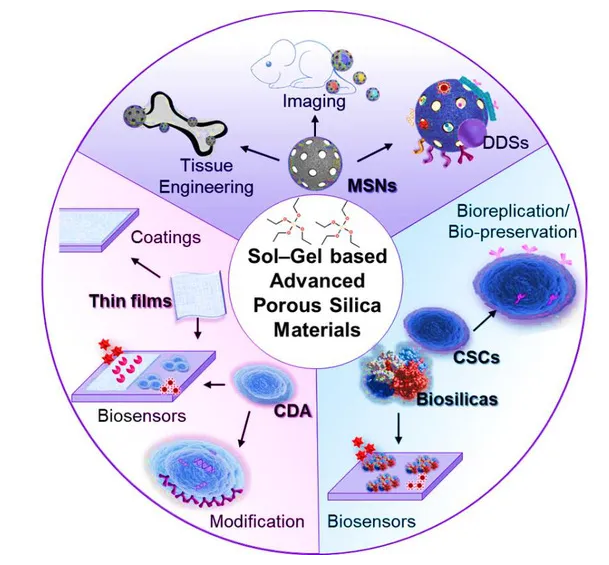South China Institute of Technology
QQ Academic Group: 1092348845
Detailed

Up to now, porous silicon materials have been widely used in the fields of adsorption, catalysis, energy and nanomedicine. Currently, most porous silicon materials are mainly synthesized based on the sol-gel method (Sol-Gel) in which soluble silicon precursors are transformed into amorphous siloxane networks. The convenient sol-gel method provides unlimited possibilities for the construction of binary, ternary or even more complex multi-component organic-inorganic hybrid materials. This review takes nano particles, thin film materials and biomimetic silicon mineralization/replication based on biological systems as the starting point, and systematically introduces the preparation, properties, and related biology of porous silicon materials derived from the sol-gel method in recent years. application.
The article first summarizes the construction ideas and development status of drug delivery carriers based on mesoporous silica nanoparticles, multimodal imaging and diagnosis and treatment systems, tissue engineering and bone repair materials; then, it discusses in depth the preparation of self-assembly methods by evaporation induction. The application of mesoporous silicon film materials and cell-induced assembly of biological/nano interface in bioactive coatings, biosensing, and immobilization of living cells; further details the biomimetic mineralization/immobilization of biomolecules and biological organisms As well as the development trends and potential applications of silicon replicas of complex biological organisms; finally, the safety, multi-functionality, transformation potential and problems still to be solved of the above-mentioned advanced porous silicon materials in the application of biomedicine are analyzed and summarized. And outlook.Article source: School of Biological Science and Engineering, South China University of Technology
This information is sourced from the Internet for academic exchange only. If there is any infringement, please contact us to delete it immediately.
- Previous: Breakthrough in proces
- Next: A Rising 2D Star: Nove


 Academic Frontier
Academic Frontier
